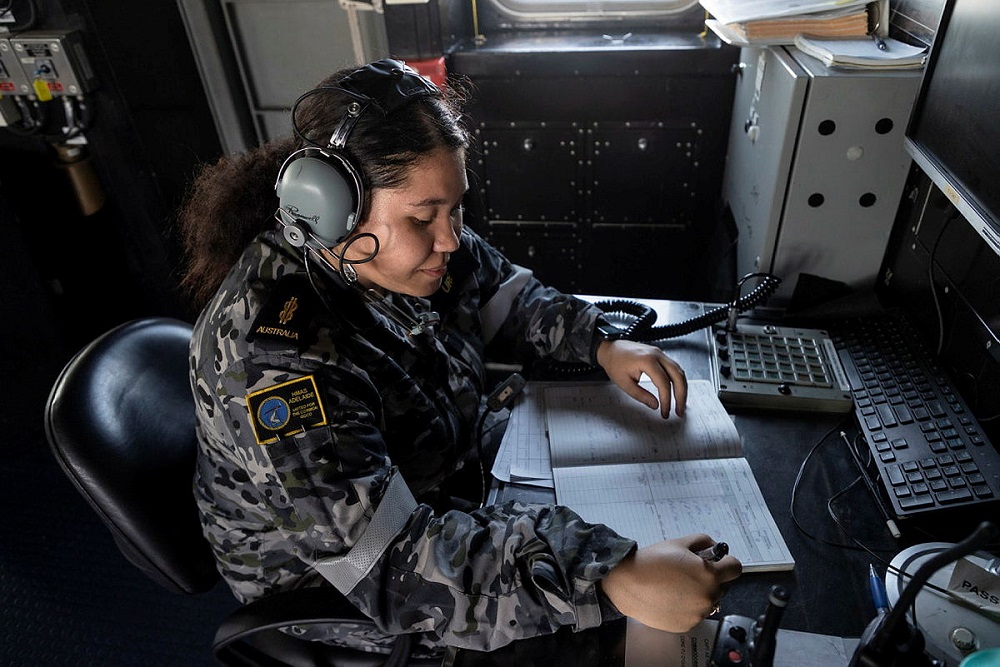
As the strategic environment continues to darken, the defence force built by Australia in the decades after the Vietnam War is being completely reconfigured. Long gone is the reliance on light infantry combat capabilities that could be quickly and seamlessly deployed to our immediate region or blended into allied forces. Despite the lessons of the Ukraine conflict, the hardened army seems to be limited to a single brigade in the plan outlined in the 2023 defence strategic review.
The emphasis now is on rapidly acquiring disruptive technologies such as artificial intelligence, autonomous systems and hypersonic missiles and on adopting a more focused and agile force posture out of northern Australia.
Strategists can debate the wisdom and the viability of these changes as much as they like, but it’s beyond dispute that if Australia hopes to realise its vision for a more lethal dispersed defence force with shorter internal lines of communication, a modernised and more decentralised approach to information and communications technology will be required.
The new technologies that Defence wants require huge computing power. Emerging AI and machine-learning capabilities would, if adopted across the Australian Defence Force, completely overwhelm Defence’s existing ICT infrastructure. Storing and managing the torrent of data these new systems will both generate and use to function effectively will involve a massive digital infrastructure uplift.
These changes are dry and technical. They tend not to attract the attention of journalists, commentators or strategists. Digital infrastructure can’t be used to cross an obstacle; nor can it be used for long-range strike. But in the information age it will include critical enablers of other capabilities and Defence is simply not ready for the world ahead.
Currently, Defence’s ICT infrastructure is deployed in three ways: on-premises via the private network operated in Defence-owned and -operated data centres, in the cloud with centralised service providers such as Vault Cloud, Amazon WebServices or Microsoft Azure, or in a hybrid of the two.
While this enables Defence to consolidate resources and achieve relative economies of scale with reduced costs, it also presents security and scaling challenges.
All network, hardware resource, data and control is consolidated in and controlled by a central entity, which can lead to a single point of failure and opaque security and performance.
More importantly, though, the concentration of cloud hosting services in nine urban centres across Australia leaves a major capability gap in the northern bases, the very area the DSR nominated as central to the ADF’s future force posture.
Recognising the limitations of the current infrastructure, and a need to improve interoperability with allied forces, the government has agreed in principle to the DSR’s recommendations to shift Defence to an open ICT architecture.
However, the future of an open architecture is intertwined with and dependent on the broader defence strategy and technology estate. The success of this shift hinges on a balanced investment in core infrastructure alongside the pursuit of a more decentralised approach, which will have the most benefits where capabilities are at their most feeble while being required the most.
Unlike centralised cloud service providers, a decentralised infrastructure relies on a distributed network of computers and hardware devices that can be operated without the need for intermediaries or centralised control.
Decentralised infrastructure offers a paradigm shift in security, control, cost and accessibility compared with traditional centralised cloud networks. It enhances security by distributing data across a network of computers, meaning there’s no single point of failure.
Users also gain increased control since their data isn’t managed by third-party providers and the risk of potential data misuse is minimised. Decentralisation frees data from specific locations or devices, enabling users to access their data across multiple locations. This will be critical as Defence disperses large sections of its workforce across the country, including into remote locations.
A priority identified in response to the DSR is improving the ADF’s ability to operate from Australia’s northern bases. Defence’s emphasis on littoral operations in the northern land and maritime domains, coupled with the need for a long-range strike capability and seamless collaboration with partners, will require more efficient and adaptive infrastructure.
Decentralisation emerges as a crucial strategy to address a critical capability gap in northern Australia, given that there are no core data centres in the region, and interoperability will be paramount. Adopting a more decentralised architecture promises to enhance access to data and improve interoperability with partners. In addition, a decentralised approach offers cost advantages by allowing Defence to start small and providing a scalable framework. It also helps bolster network security, fortifying the overall resilience of Defence operations in the north.
As Australia accelerates its acquisition of disruptive technologies, including autonomous systems and hypersonic missiles, operationalising these advancements will require a modernised and decentralised approach to ICT.
Decentralised ICT offers enhanced security, control, cost-efficiency, scalability and accessibility—all especially important as Australia develops its critical northern bases.
This paradigm shift is crucial to reshaping Defence’s digital backbone to meet the demands of a dynamically evolving strategic landscape.

